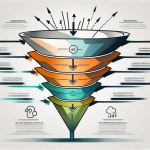In the vast world of digital marketing, there’s a buzzword that often comes up: Cost Per Click Advertising or CPC Advertising. But what exactly does it mean? In this article, we’ll take a deep dive into the secrets of CPC Advertising and unravel its mysteries. So, buckle up and get ready to boost your marketing game!

Defining Cost Per Click (CPC) Advertising
Let’s start with the basics. In simple terms, CPC Advertising is a model in which advertisers pay a specific amount of money each time a user clicks on their online ads. It’s like a bidding war, where advertisers compete for clicks. The higher your bid, the better your chances of winning a prominent spot on search engine result pages or websites.
CPC Advertising is a popular choice for many marketers because it allows them to have more control over spending and measure the effectiveness of their campaigns. Plus, it offers a cost-efficient way to drive targeted traffic to websites.
But how does CPC Advertising really work? Let’s take a closer look.
When a user performs a search or visits a website, relevant ads are displayed based on keywords or audience targeting. These ads are designed to catch the user’s attention and entice them to click. Each time a user clicks on an ad, the advertiser is charged a predetermined amount, which is often based on a bidding system.
Now, you might be wondering, why would advertisers be willing to pay for clicks? The answer lies in the potential return on investment. By driving traffic to their websites, advertisers have the opportunity to convert those visitors into customers. This is where CPC Advertising becomes a valuable tool in the digital marketing landscape.
The Role of CPC in Digital Marketing
CPC Advertising plays a crucial role in digital marketing strategies. It acts as a gateway to connect businesses and their potential customers efficiently. By bidding on specific keywords or targeting specific audiences, businesses can present their offerings to the right people at the right time and increase their chances of converting potential customers into loyal brand advocates.
Imagine you own a small business that sells handmade jewelry. With CPC Advertising, you can bid on keywords like “unique jewelry” or “handcrafted accessories” to ensure that your ads appear when users search for those terms. This targeted approach allows you to reach individuals who are actively looking for products like yours, increasing the likelihood of making a sale.
Furthermore, CPC Advertising provides valuable data and insights that can inform future marketing decisions. By analyzing click-through rates, conversion rates, and other metrics, marketers can refine their strategies and optimize their campaigns for better results.
Key Terms in CPC Advertising
Before we dive deeper, let’s familiarize ourselves with some key terms used in the world of CPC Advertising:
- Click: A single interaction where a user clicks on an ad.
- Bid: The amount an advertiser is willing to pay for a click. Higher bids often lead to better ad placements.
- Ad Rank: A metric that determines the position of an ad based on factors such as bid amount, ad quality, and relevance.
- Quality Score: An evaluation of the quality and relevance of an ad. A higher quality score can lead to lower CPC rates.
- Conversion: The desired action taken by a user after clicking on an ad, such as making a purchase or filling out a form.
- Landing Page: The web page where users are directed to after clicking on an ad. It should be relevant to the ad and optimized for conversions.
Understanding these terms is essential for navigating the world of CPC Advertising effectively. By mastering these concepts, marketers can make informed decisions and maximize the impact of their campaigns.
How Does CPC Advertising Work?
Curious to know how the magic happens behind the scenes? Let’s uncover the process of CPC Advertising!
CPC Advertising, also known as Cost-Per-Click Advertising, is a popular model used by advertisers to drive traffic to their websites. It is a method where advertisers pay a fee each time their ad is clicked. This form of advertising can be found on search engines, social media platforms, and other websites that offer advertising space.
The Process of CPC Bidding
When you decide to run a CPC Advertising campaign, the first step is to set a budget and determine the maximum amount you’re willing to pay for a click. This budget will help you control your advertising costs and ensure that you don’t overspend. Once you have set your budget, you’ll then bid against other advertisers who are targeting similar keywords or audience segments.
The auction takes place in real-time, with search engines and ad networks deciding which ads to display based on various factors like bid amount, ad relevance, and user experience. Advertisers compete for ad placement, and the highest bidder gets the top spot. However, it’s not just about the highest bid; other factors also come into play.
Factors Influencing CPC Rates
Now, you might be wondering what influences the cost of each click. Well, several factors come into play, such as keyword competitiveness, ad relevance, user engagement, and the quality score.
Keyword competitiveness refers to how many other advertisers are bidding on the same keyword. The higher the demand for a keyword and the more competitive the market, the higher the CPC rate will be. For example, if you are targeting a highly competitive keyword like “insurance,” you can expect to pay a higher CPC rate compared to a less competitive keyword like “handmade soap.”
Ad relevance is another crucial factor. Search engines and ad networks want to provide users with the most relevant ads possible. If your ad is highly relevant to the search query or the content on the website, you may get a higher ad placement and a lower CPC rate. On the other hand, if your ad is not relevant, you may have to bid higher to get noticed.
User engagement plays a role in determining CPC rates as well. If users are actively clicking on your ad and engaging with your website, search engines and ad networks may see your ad as more valuable and reward you with a lower CPC rate. This is why it’s essential to create compelling ads that resonate with your target audience and encourage them to take action.
Lastly, the quality score is a metric used by search engines to evaluate the quality and relevance of your ads and landing pages. A higher quality score can lead to a lower CPC rate, as it indicates that your ad provides a positive user experience. To improve your quality score, focus on creating high-quality ads, optimizing your landing pages, and ensuring a seamless user experience.
So, choose your keywords wisely, create compelling ads, and optimize your campaigns to get the best bang for your buck in the world of CPC Advertising!
Benefits of Using CPC Advertising
Now that you know the ropes of CPC Advertising, let’s explore the benefits that come with it.
CPC Advertising, also known as Cost-Per-Click Advertising, offers several advantages that can greatly benefit businesses and marketers. In this expanded version, we will delve deeper into two key benefits: budget control and targeting capabilities.
Budget Control in CPC Advertising
No one likes the idea of draining their marketing budget without seeing real results. Luckily, with CPC Advertising, you have complete control over your spending. Unlike traditional advertising methods where you pay a fixed amount regardless of the outcome, CPC Advertising ensures that you only pay when someone clicks on your ad.
This pay-per-click model makes it easier to track the return on your investment. By analyzing the number of clicks generated by your ads, you can gain valuable insights into the effectiveness of your campaign. This control gives you the freedom to adjust your budget and bidding strategy to maximize your results.
Furthermore, CPC Advertising allows you to set a maximum bid for each click, ensuring that you stay within your desired budget. This flexibility is particularly beneficial for small businesses or startups with limited resources, as it allows them to allocate their marketing budget more efficiently.
Targeting Capabilities of CPC
One of the biggest advantages of CPC Advertising is its precise targeting capabilities. In traditional advertising, reaching the right audience can be a challenge, resulting in wasted impressions and ineffective campaigns. However, with CPC Advertising, you have the power to choose specific keywords, demographics, locations, or interests to display your ads.
By narrowing down your target audience, you increase the chances of attracting users who are genuinely interested in your product or service. This targeted approach can lead to higher conversion rates and ultimately, a higher return on investment.
For example, if you are a local bakery looking to promote your new line of gluten-free pastries, you can specifically target individuals in your area who have shown an interest in gluten-free diets. This level of precision ensures that your ads are seen by the right people at the right time, increasing the likelihood of them taking action.
Moreover, CPC Advertising platforms often provide advanced targeting options, such as retargeting, which allows you to display ads to users who have previously interacted with your website or shown interest in your products. This strategy can significantly improve the effectiveness of your campaigns by re-engaging potential customers and reminding them of your offerings.
In conclusion, CPC Advertising offers businesses the ability to have better control over their budget and target their ads to a specific audience. By utilizing these benefits, marketers can optimize their campaigns and achieve higher conversion rates. Whether you are a small business or a large corporation, CPC Advertising can be a valuable tool in your marketing arsenal.
Drawbacks of CPC Advertising
While CPC Advertising has its fair share of advantages, it’s important to acknowledge its drawbacks as well.
Potential Risks and Challenges
CPC Advertising is a competitive space, and it’s easy to get caught up in bidding wars. It’s crucial to set realistic expectations and think strategically about your bidding strategy. Overspending or targeting irrelevant keywords can result in wasting your budget without achieving your desired outcomes.
Mitigating Common CPC Issues
To overcome common issues in CPC Advertising, it’s essential to constantly monitor and optimize your campaigns. Regularly review your keywords, ad relevancy, and landing page experience. Experiment with different ad copy and bidding strategies to find what works best for your business. Staying vigilant and adaptable will help you stay ahead of the game!
Strategies for Optimizing CPC Advertising
Ready to take your CPC Advertising game to the next level? Here are some strategies to help you optimize your campaigns.

Improving Quality Score for Lower CPC
A high-quality score can contribute to lower CPC rates. To boost your quality score, focus on creating relevant ads, optimizing your landing pages, and improving user experience. By delivering a valuable and seamless experience to your users, you not only increase your chances of conversions but also decrease your advertising costs.
Effective Keyword Selection in CPC Advertising
Keywords are the backbone of CPC Advertising, so choosing the right ones is crucial. Conduct thorough keyword research to identify relevant and high-performing keywords that align with your business objectives. Incorporate both generic and long-tail keywords to capture a broader audience and consider negative keywords to exclude irrelevant searches.
And there you have it! You’ve now unlocked the secrets of CPC Advertising. Armed with this knowledge, you can dive deeper into the world of digital marketing and make informed decisions to elevate your business. So, go forth, experiment, and may your clicks be ever prosperous!





